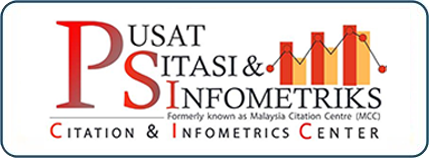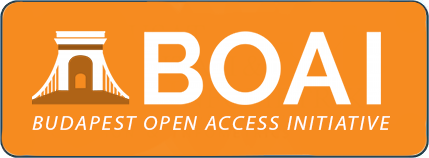Elemen Utama dalam Pembentukan Jati Diri Kesukarelawanan Belia Malaysia
Main Elements in The Formation of Self-Identity of Malaysian Youth Volunteerism
DOI:
https://doi.org/10.33102/sainsinsani.vol9no2.704Keywords:
Jati Diri, Kesukarelawanan, Elemen Dalaman, Elemen Luaran, NGT dan Belia Malaysia.Abstract
Abstrak: Globalisasi, pemodenan dan kecanggihan teknologi terkini mengubah nilai dan norma masyarakat, menggugatkan tradisi kesukarelawanan dan menyebabkan skor indikator sukarelawan belia Malaysia telah menunjukkan penurunan. Apabila masyarakat menjadi lebih materialistik dan individualistik, semangat bantu-membantu, tradisi berkongsi dan semangat kesukarelawanan semakin meluntur. Kajian Penilaian Hasil Indeks Belia Malaysia 2019 oleh Institut Penyelidikan Pembangunan Belia Malaysia menunjukkan bahawa indikator sukarelawan, di bawah Domain Identiti, masih berada pada tahap sederhana dengan skor 60.93 peratus. Oleh itu, artikel ini bertujuan untuk mengenalpasti faktor-faktor yang mempengaruhi jati diri kesukarelawanan belia Malaysia melalui elemen dalaman dan luaran yang membawa implikasi signifikan terhadap karakter atau personaliti belia. Metodologi yang telah diaplikasi ialah Nominal Group Technique (NGT) yang dilaksanakan dalam kalangan 20 orang informan melibatkan pimpinan utama pertubuhan kesukarelawan di kawasan terpilih. Hasil kajian telah berjaya mengenalpasti elemen dalaman dan luaran yang menjadi pemangkin kepada pembentukan jati diri kesukarelawanan belia. Elemen dalaman utama yang telah diidentifikasi ialah minat yang mendalam, sikap sedia membantu, nilai jati diri, matlamat hidup, ihsan dan semangat kebersamaan. Sementara itu, elemen luaran yang banyak mempengaruhi pembentukan jati diri kesukarelawanan belia ialah peluang yang terbuka, dorongan keluarga, pengaruh rakan sebaya, faktor agama, pengembangan ilmu dan kerjaya, motivasi ekstrinsik, dan pengaruh media sosial. Berdasarkan kepada hasil kajian, kedua-dua elemen dalaman dan luaran mempunyai pengaruh tersendiri yang signifikan dalam proses pembentukan jati diri kesukarelawanan belia. Maka, kedua-dua elemen tersebut perlu diperkasa dalam usaha untuk terus memupuk dan mendorong golongan belia terlibat aktif dalam aktiviti kesukarelawanan yang akan membawa implikasi positif kepada prospek pembangunan masyarakat setempat.
Abstract: Globalization, modernity, and advanced technology developments alter societal values and norms, eroding the tradition of volunteering and resulting in a fall in the volunteer indicator score among Malaysian youth. As society increasingly embraces materialism and individualism, the ethos of mutual assistance, the tradition of sharing, and the spirit of volunteerism diminish. The 2019 Malaysian Youth Index Results Evaluation Study conducted by the Malaysian Youth Development Research Institute indicates that the volunteer indication within the Identity Domain remains moderate, achieving a score of 60.93 percent. This article seeks to explore the aspects that affect the identity of Malaysian youth volunteering through internal and external elements that significantly impact their character or personality. The Nominal Group Technique (NGT) was implemented among 20 informants involving the critical leadership of volunteering organizations in selected localities. The study results have effectively identified internal and environmental factors that catalyze the formation of young volunteering identity. The primary internal components identified include profound curiosity, readiness to assist, self-esteem, life objectives, politeness, and camaraderie. External factors significantly impacting the development of youth volunteering identities include available possibilities, familial support, peer influence, religious considerations, knowledge and career advancement, extrinsic incentives, and social media influence. According to the study's findings, internal and external factors greatly impact how young people develop their identities as volunteers. Both of these components must be strengthened to continue nurturing and motivating the youth to actively participate in volunteer activities to impact the local community's growth prospects positively.
Downloads
References
Adibah Sulaiman @ Mohamad, Noorsafuan Che Noh & Ezad Azraai Jamsari. (2019). Jati Diri Kanak-Kanak Melayu-Islam Menerusi Pendidikan Awal. Dalam Mohd Azmir Mohd Nizah, Mashitah Sulaiman & Adibah Sulaiman @ Mohamad (Pytg), Prosiding Seminar Tamadun, Etnik dan Turath Islami (i-STET) (pp 204-210). Pusat Pengajian Teras, USIM.
Ahmad Al Hafiz Ahmad Salim. (2005). Penglibatan mahasiswa dalam aktiviti kesukarelawanan: Satu kajian kes di Fakulti Ekologi Manusia, Universiti Putra Malaysia. [Projek Tahun Akhir, Universiti Putra Malaysia].
Allen, J. P., Kuperminc, G., Philliber, S., Herre, K. (1994). Programmatic prevention of adolescent behavior problems: The role of autonomy, relatedness, and volunteer service in Teen Outreach programs. Am. J. Community Psychol, 22, 617-638.
Altman, D., & Feighery, E. (2004). Future directions for youth empowerment: Commentary on application of youth empowerment theory for tobacco control. Heath Education and Behavior, 31(5), 641-647. Doi: 10.1177/1090198104268683.
Azizan Bahari. (2003). Menghayati Kerja Sukarela. Qarya Sdn Bhd.
Azzurin Mohd Yassin & Mas Rynna Wati Ahmad. (2018). Konsep Jati Diri Melayu dalam Puisi Catatan Kembara “Nota Kecil Menyeberang Usia”. Penerbit Universiti Kebangsaan Malaysia.
Bezruchka, S. (2000). Medical tourism as medical harm to the Third World: Why? For whom? Wilderness & Environmental Medicine, 2(11), 77–78.
Brewis, G., Hill, M., & Stevens, D. (2010). Valuing volunteer management. Institute for Volunteering Research.
Clary, E. G., & Snyder, M. (1999). The motivations to volunteer: Theoretical and practical considerations. Current Directions in Psychological Science, 8(5), 156-159.
Dorsch, K. D., Riemer, H. A., Sluth, V., Paskevich, D. M., & Chelladurai, P. (2002). What Affects a Volunteer's Commitment?. Canadian Centre for Philanthropy.
Eyler, J. S., & Giles, D. E. J. (1999). Where's the Learning in Service-Learning?. Jossey-Bass.
Faridah Nor Mohd Yasin. (2005). Pengetahuan dan penglibatan dalam kerja-kerja kesukarelawanan komuniti: Satu kajian kes di kalangan mahasiswa UPM. [Projek Tahun Akhir, Universiti Putra Malaysia].
Geiser, C., Okun, M. A. & Grano C. (2014). Who is motivated to volunteer? A latent profile analysis linking volunteer motivation to frequency of volunteering. Psychological Test and Assessment Modeling, 56(1),3-24.
Grant, S., Maass, S., Vettern, R., Harrington, R., O’Neil, K., Patricia McGlaughlin, P. & Good, T. (2020). The impact of volunteering: A multi-state study of 4-H youth development volunteers. Journal of Youth Development, 15(4), 32-50.
Haslinda Abdullah, Dzuhailmi Dahalan, Azimi Hamzah, Ismi Arif Ismail, Ezhar Tamam, Abdul-lateef Abdullah, Gill, Nobaya Ahmad. (2012). Majlis Belia Malaysia: Quo vadis transformasi era semasa. Malaysia Journal of Society and Space, 7(7), 13-19.
Hill, M., & Russell, J. (2009). Young People, Volunteering and Youth Projects: A Rapid Review of Recent Evidence. IVR.
Ho, E., Clarke, A., & Dougherty, I. (2015). Youth-led social change: Topics, engagement types, organizational types, strategies, and impacts. Futures 67(2015), 52-62. Doi: 10.1016/j.futures.2015.01.006.
Institut Penyelidikan Pembangunan Belia Malaysia. (2013). Laporan Tahunan 2013. Kementerian Belia dan Sukan Malaysia.
Jardim C. & Marques da Silva S. (2018). Young people engaging in volunteering: Questioning a generational trend in an individualized society. Societies, 8(1), 8.
Kuperminc, G. P., Holditch, P. T. & Allen, J. P. (2001). Volunteering and community service in adolescence. Adolesc Med, 2(3), 445-57.
Ludden, A. B. (2011). Engagement in school and community civic activities in rural adolescents. Journal of Youth Violence, 40, 1254-1270.
Majlis Belia Malaysia. (2010). Hala tuju Majlis Belia Malaysia 2010-2012. Kertas kerja dibentangkan pada Majlis Perundingan Belia Negara. Jabatan Perdana Menteri, Putrajaya.
McKinney, M. L. (2002). Urbanization, biodiversity and conservation. BioScience, 52, 883–890.
Mohd Rizal Mohd Sham. (2014). Transisi usia belia: Rasional dan persediaan generasi muda. Buletin Fakta, 4, 6.
Mohd. Irwan Mohd. Kasim. (2008). Penglibatan mahasiswa Institusi Pengajian Tinggi Swasta dalam kerja-kerja kesukarelawanan komuniti: Satu kajian kes di kalangan mahasiswa Universiti Tenaga Nasional dan Kuala Lumpur Infrastruktur Universiti Kolej. [Projek Tahun Akhir, Universiti Putra Malaysia].
Musick, M., & Wilson, J. (2003). Volunteering and depression: The role of psychological and social resources in different age groups. Social Science and Medicine, 56(2), 259-269.
Norehan Abdul Rahman. (2018). Tahap penglibatan dalam aktiviti sukarela dan kesannya terhadap kesejahteraan diri golongan awal dewasa di Kedah. [PhD thesis, Universiti Sains Malaysia].
Norhafizah Johar. (2008). Motivasi diri dan tahap penglibatan melakukan kerja-kerja kesukarelawanan di kalangan mahasiswa Universiti Putra Malaysia, Serdang. [Projek Tahun Akhir, Universiti Putra Malaysia].
Nur Raihan Che Nawi & Azizan Asmuni. (2013). Motivasi sukarelawan terhadap penglibatan dalam kerja sukarela di Yayasan Salam Malaysia. Dalam Prosiding Seminar Pasca Siswazah Dalam Pendidikan (GREDUC 2013). Fakulti Pengajian Pendidikan, Universiti Putra Malaysia.
Oesterle, S., Johnson, M. K. & Mortimer, J. T. (2004). Volunteerism during the transition to adulthood: A life course perspective. Social Forces, 82(3), 1123-1149.
Roberts, B. W., Walton, K. E. & Viechtbauer W. (2006). Patterns of mean-level change in personality traits across the life course: A meta-analysis of longitudinal studies. Psychological Bulletin, 132, 1-25.
Saifuddin Abdullah. (2001). Gerakan Kesukarelaan Menjana Perubahan Bermakna. Majlis Belia Malaysia.
Sarimah Ismail. (2014). Youth volunteerism in Chow Kit, Malaysian: Factors of involvement. International Conference on Global Trends in Academic Research. Kuala Lumpur, 2-3 Jun.
Schlegelmilch, B. B. & Tynan, C. (1989). Who volunteers? An investigation into the characteristics of charity volunteers. Journal of Marketing Management, 5(2), 133-151.
Shariffah Mamat. (2013). Sukarelawan: My Beautiful Malaysia Day 2013. Buletin Institut Penyelidikan Pembangunan Belia Malaysia. Edisi Pertama 2013. Kementerian Belia dan Sukan.
Sharififar, F., Jamalian, Z., Nikbakhsh, R., Ramezani, Z. N. (2011). Influence of social factors and motives on commitment of sport events volunteers. World Academy of Science, Engineering and Technology, 77, 1078-1082.
Siti Norkhadhijah Isak. (2007). Pengaruh ciri personaliti prososial dan motivasi terhadap penglibatan aktiviti kesukarelawanan di kalangan mahasiswa Universiti Putra Malaysia, Serdang, Selangor. [Projek Tahun Akhir, Universiti Putra Malaysia].
Tajul Arifin Muhamad & Aishah Nadirah Mohamed Alauddin. (2013). Motif penglibatan sukarelawan sukan Institusi Pengajian Tinggi. Jurnal Pendidikan Malaysia, 38(2), 51-59.
Tessier, S., Minh-Mguyet, N. & Gagmon, K. (2006). Youth volunteerism. Toronto, Knowledge Development Centre, Imagine Canada.
Tuan Pah Rokiah Syed Hussain & Lilah Yasin (2016). Belia dan program kesukarelawan di Malaysia: satu kajian empirikal. Geografia: Malaysian Journal of Society and Space, 12(10), 183-194.
Turiman Suandi. (2009). Volunteerism Expanding the Frontiers of Youth Development. Universiti Putra Malaysia Press.
UNESCO. (2012). Social and human sciences: Acting with and for youth Available from: http://www.unnesco.org
Unit Perancang Ekonomi. (2004). Kualiti Kehidupan Malaysia. Unit Perancang Ekonomi, Jabatan Perdana Menteri.
Wasitah Mohd Yusof. (2013). Kesukarelaan. Buletin Institut Penyelidikan Pembangunan Belia Malaysia. Edisi Pertama 2013. Kementerian Belia dan Sukan.
Weinstock, H., Berman, S. & Cates, W. (2004). Sexually transmitted diseases among American youth: Incidence and prevalence estimates, 2000. Perspectives on Sexual and Reproductive Health 36.
Wilson, J. (2000). Volunteering. Annual Review of Sociology, 26, 215-240.
Wu, J., Lo, T. W. & Liu, E. S. C. (2009). Psychometric properties of the volunteer functions inventory with Chinese students. Journal of Community Psychology, 37(6), 769-780.
Xu, Y. & Ngai, N. P. (2011). Moral resources and political capital: Theorizing the relationship between voluntary service organizations and the development of civil society in China. Nonprofit and Voluntary Sector Quarterly, 40, 247-269.
Youniss, J., Mclellan, J. M. & Mazer, B. (2001). Voluntary service, peer group orientation, and civic engagement. Journal of Adolescent Research, 16(5), 456-468.
Downloads
Published
How to Cite
Issue
Section
License
Copyright (c) 2024 Mohd Mahadee Ismail, Ku Hasnita Ku Samsu, Yok Fee Lee, Marzudi Md Yunus, Khairol Anuar Kamri, Hairol Anuar Mak Din, Mohd Sabri Md Nor, Zatul Himmah Adnan, Nur Shaqirah Md Yunan

This work is licensed under a Creative Commons Attribution 4.0 International License.
1. Author holds the copyright of the article.
2. Jurnal Sains Insani owns the rights to publish the article. The writer may request permission to republish the article from the editor.
3. Jurnal Sains Insani follows the APA (American Psychological Association) style for all in-text citation and list of bibliographies.











